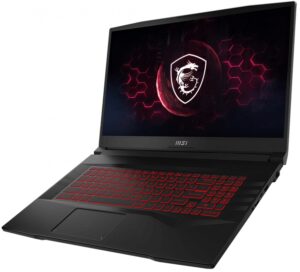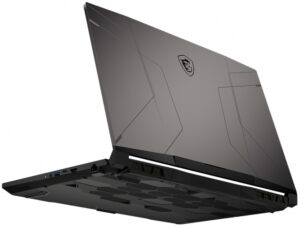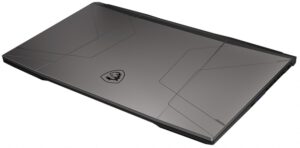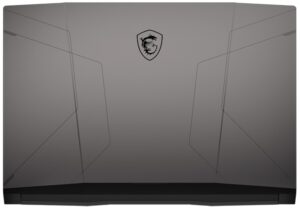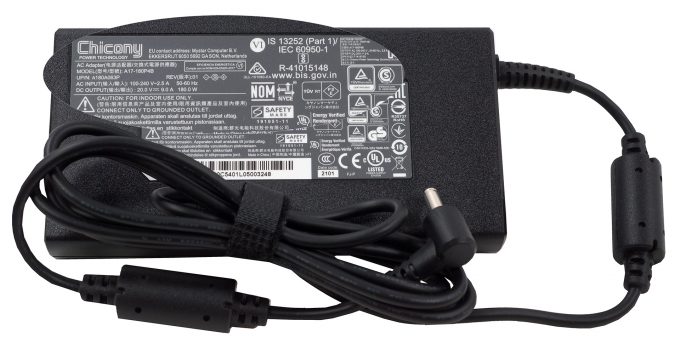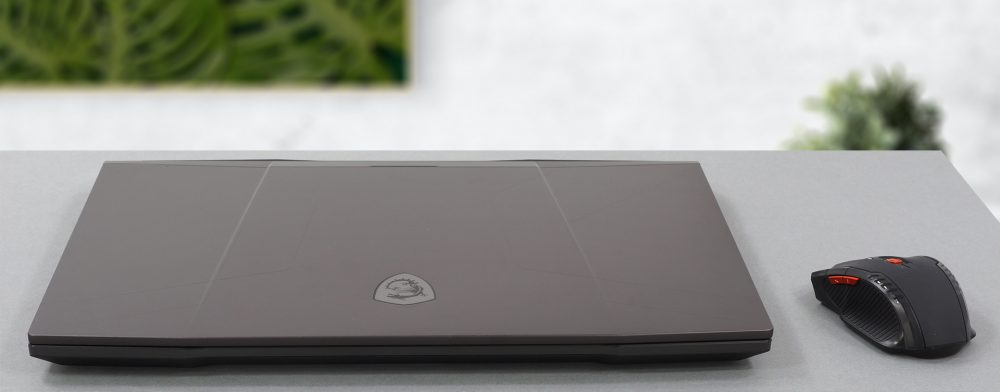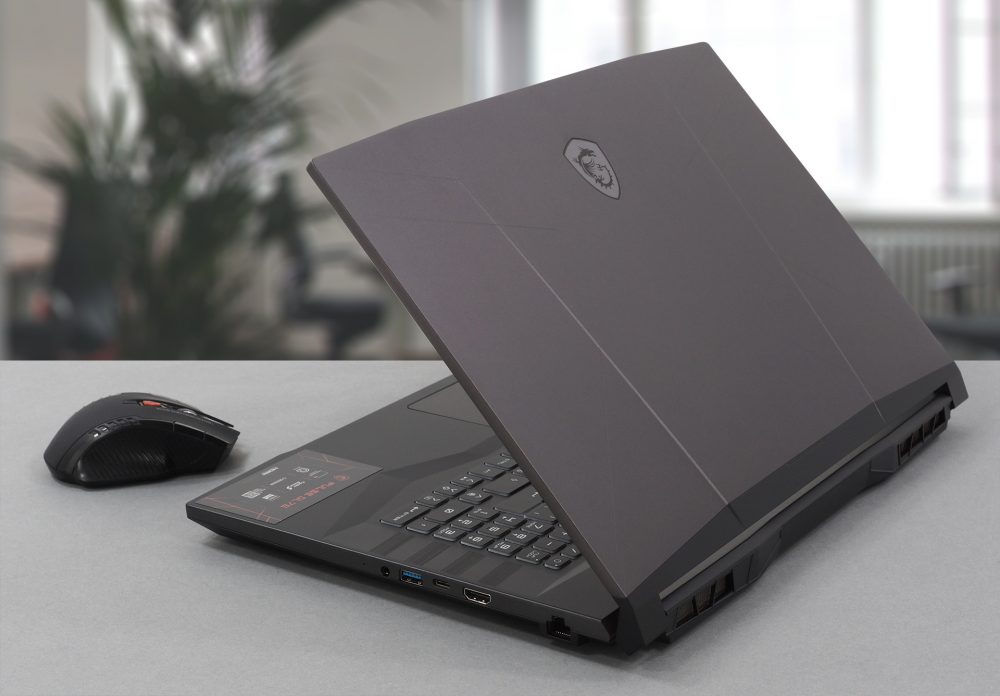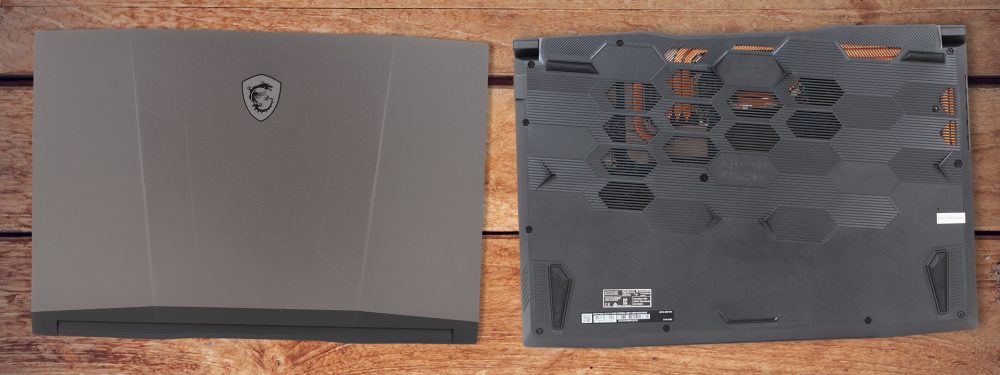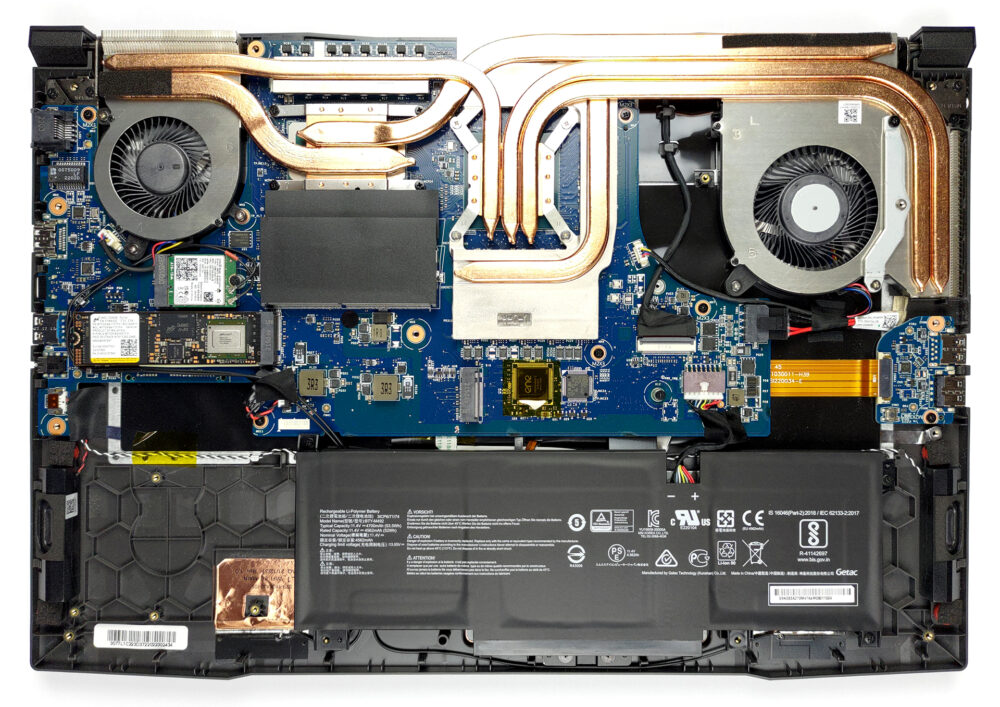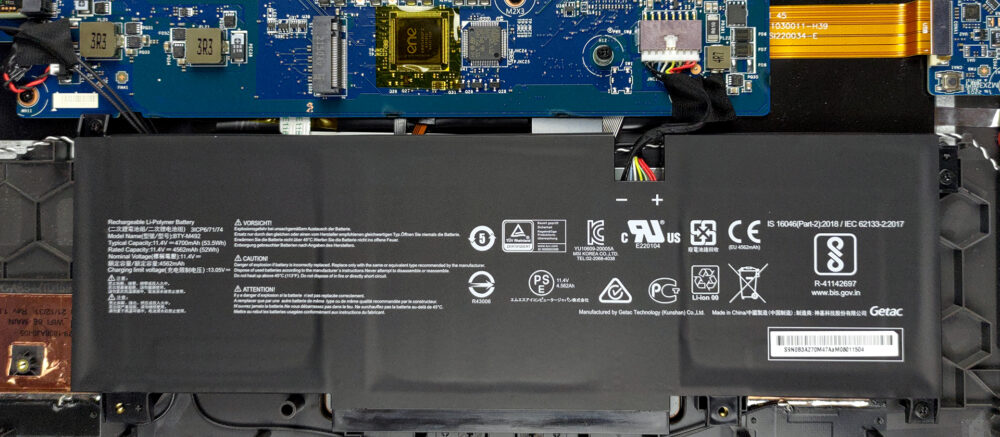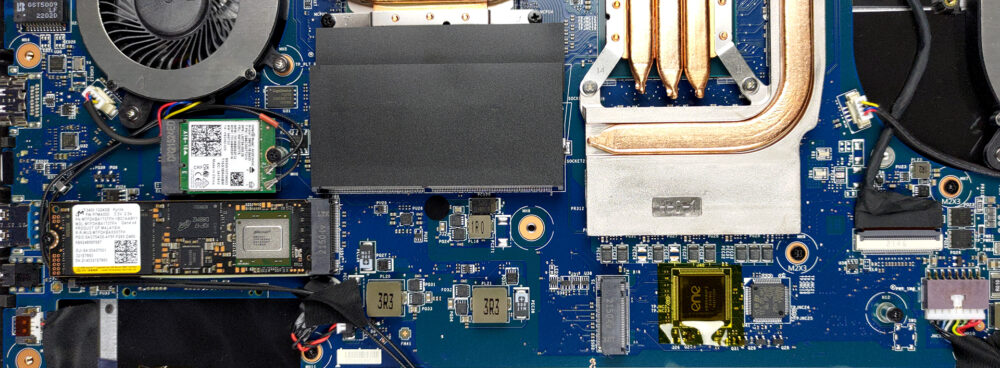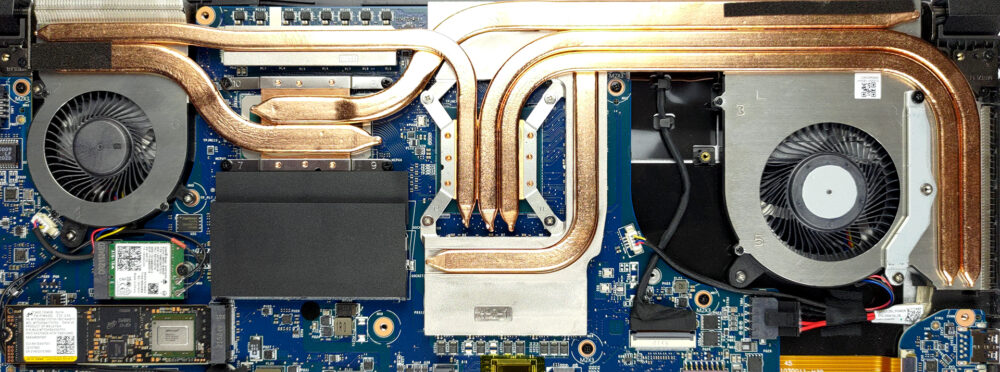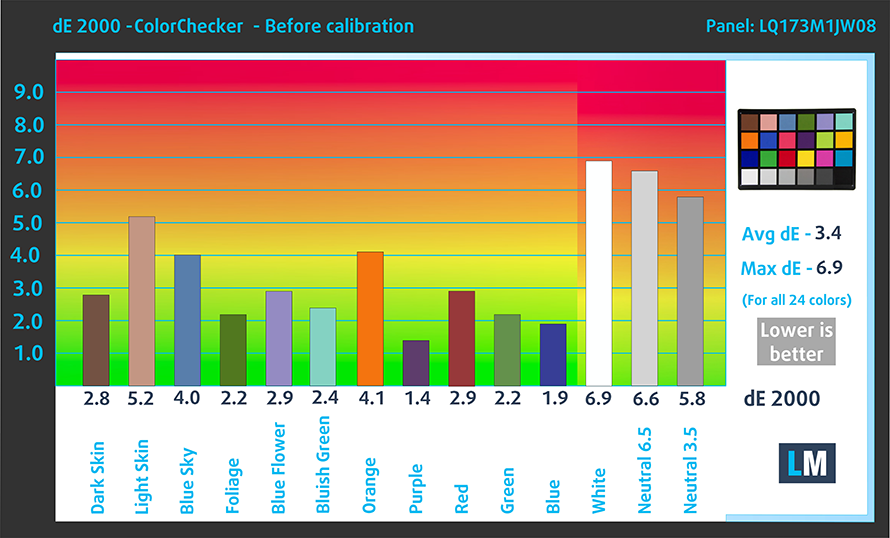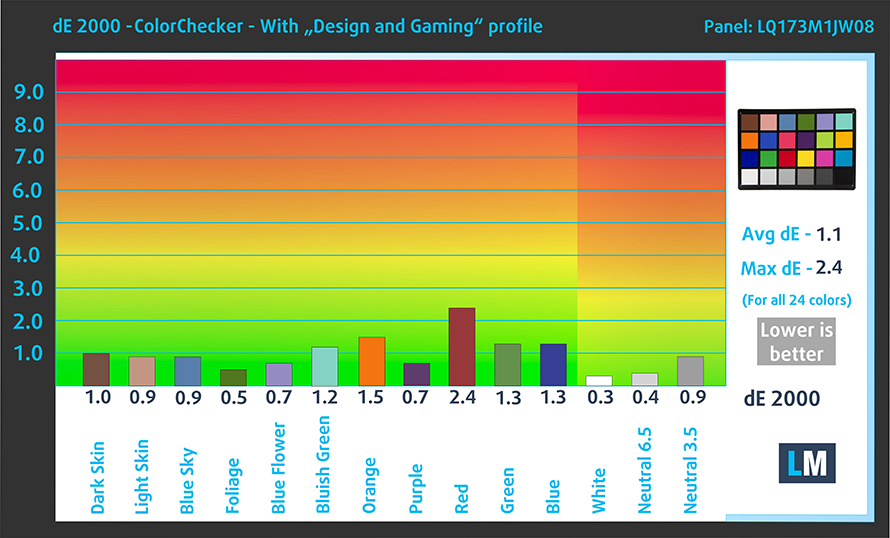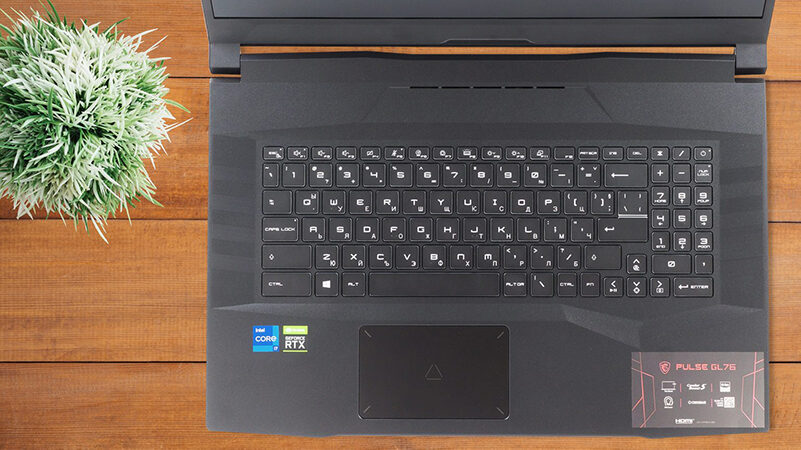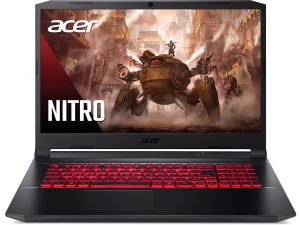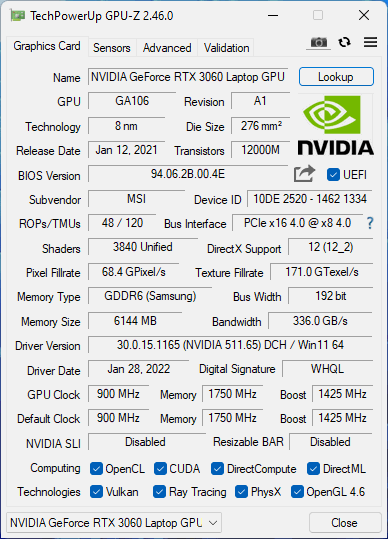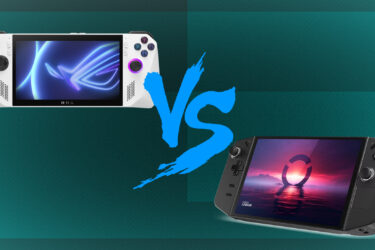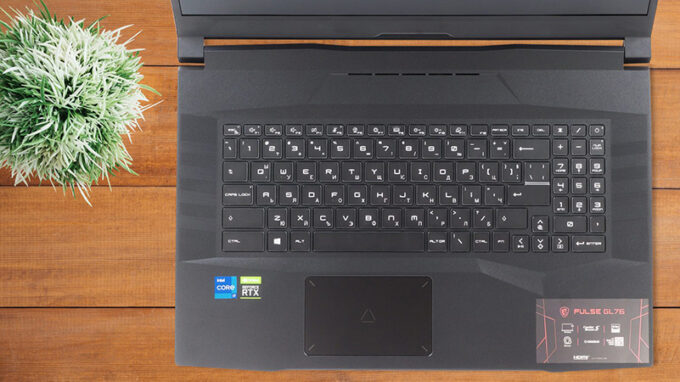 Last year, the Pulse GL76 from MSI was one of the first laptops to come with Intel’s 11th Gen processors. They were a part of the company’s huge renaming scheme, which included the addition of the Katana, Sword, Crosshair, Delta, Vector, and many more names.
Last year, the Pulse GL76 from MSI was one of the first laptops to come with Intel’s 11th Gen processors. They were a part of the company’s huge renaming scheme, which included the addition of the Katana, Sword, Crosshair, Delta, Vector, and many more names.
Now, the device gets the sweet Alder Lake treatment, which will push it even further. Interestingly, even though we weren’t satisfied with the cooling solution on last year’s model, MSI decided to give it quite a significant bump in TGP – now up to 105W (20W more than last year). We really hope that the brand has something up its sleeve because the situation was pretty painful last time round.
In addition to that, the GL76 gets a new 360Hz display, which has a 1080p resolution, and should be pretty good for fast-paced games like League of Legends, CS:GO, and others.
You can check the prices and configurations in our Specs System: https://laptopmedia.com/series/msi-pulse-gl76-12ux/
Contents
Specs Sheet
- HDD/SSD
- up to 2000GB SSD
- M.2 Slot
- 2x M.2 PCIe Gen 4 x4 slots See photo
- RAM
- up to 64GB
- OS
- Windows 10 Home, Windows 11 Home, Windows 11 Pro, Windows 10 Pro
- Battery
- 53.5Wh, 3-cell, 53Wh, 3-cell, 53.5Wh, 3-cell , 53.5Wh
- Body material
- Plastic / Polycarbonate, Aluminum
- Dimensions
- 398 x 273 x 24.2 mm (15.67" x 10.75" x 0.95")
- Weight
- 2.66 kg (5.9 lbs)
- Ports and connectivity
- 1x USB Type-A
- 2.0
- 2x USB Type-A
- 3.2 Gen 1 (5 Gbps)
- 1x USB Type-C
- 3.2 Gen 1 (5 Gbps)
- HDMI
- 2.0
- Card reader
- Ethernet LAN
- 10, 100, 1000 Mbit/s
- Wi-Fi
- 802.11ax
- Bluetooth
- 5.2
- Audio jack
- 3.5mm Combo Jack
- Features
- Fingerprint reader
- Web camera
- HD
- Backlit keyboard
- Speakers
- 2x 2W, Nahimic 3D Audio
- Optical drive
- Security Lock slot
All MSI Pulse GL76 (12Ux) configurations
What’s in the box?
Inside the package, you will find the mandatory paperwork and a 240W power adapter.
Design and construction
Surprisingly, even though it comes with a 17.3-inch display, the MSI Pulse GL76 (12Ux) is both thinner and lighter than the Dell G15 5511 – a 15-inch notebook. In addition, its lid and body are very stiff with almost zero flex when we tried twisting them. Not bad at all, considering that the base is made out of plastic, while the lid is built from aluminum.
The exact measurements of the laptop are 24.2mm in thickness and 2.66 kilos in weight. However, if you opt for the larger battery pack, the weight will jump to 2.80 kg, which is still pretty respectable for a 17-incher.
Here, the lid can be opened with a single hand. It features slim bezels and an HD Web camera above the matte display – pretty standard.
Now the keyboard is a bit of a letdown. Yes, it has an RGB backlight and a NumberPad, but the key travel is short, while the feedback is softer than what would be appropriate for a gaming machine. Other than that, there are a couple of useful shortcuts, like one for performance preset switching, one for the CoolerBoost option, and one for disabling the Webcam.
Weirdly, the otherwise small touchpad is very comfortable for use and bodes well with the fast refresh rate of the panel.
The speakers on this laptop are placed below the bottom panel, where you will also find the cool air vent. Hot air respectively is exhausted through two grills on the back, and one on the left side.
Ports
On the left side, you will find the power plug, as well as two USB Type-A ports – one 3.2 (Gen. 1), and one 2.0. Then, on the right, you can see a LAN port, an HDMI connector, a USB Type-C 3.2 (Gen. 1) port, a USB Type-A 3.2 (Gen. 1) port, and an audio jack.
Disassembly, upgrade options and maintenance
To access this notebook’s internals, you need to undo 13 Phillips-head screws. After that, carefully pry the bottom panel with a plastic tool, and lift it away from the chassis.
Here, the 53.5Wh battery pack lasts for 5 hours and 30 minutes of either Web browsing, or video playback. It is pretty easy to take it out, as you will just need to undo three Phillips-head screws and unplug the connector from the motherboard.
Memory-wise, you get two SODIMM slots, which fit up to 64GB of DDR4 RAM in total. For storage, you get two M.2 PCIe x4 slots, which are Gen 4 compatible.
This notebook’s processor is cooled by two heat pipes. Three more are allocated to the GPU, with an additional heat pipe dedicated to the graphics memory and the VRMs. Two fans then blow the heat away from the device.
Display quality
MSI Pulse GL76 (12Ux) is equipped with a Full HD 360Hz IPS panel, model number Sharp LQ173M1JW08 (SHP1544). Its diagonal is 17.3″ (43.94 cm), and the resolution is 1920 х 1080 pixels. The screen ratio is 16:9, and we are looking at a pixel density of – 127 ppi, and a pitch of 0.2 х 0.2 mm. The screen turns into Retina when viewed at distance equal to or greater than 69cm (27″) (from this distance one’s eye stops differentiating the separate pixels, and it is normal for looking at a laptop).
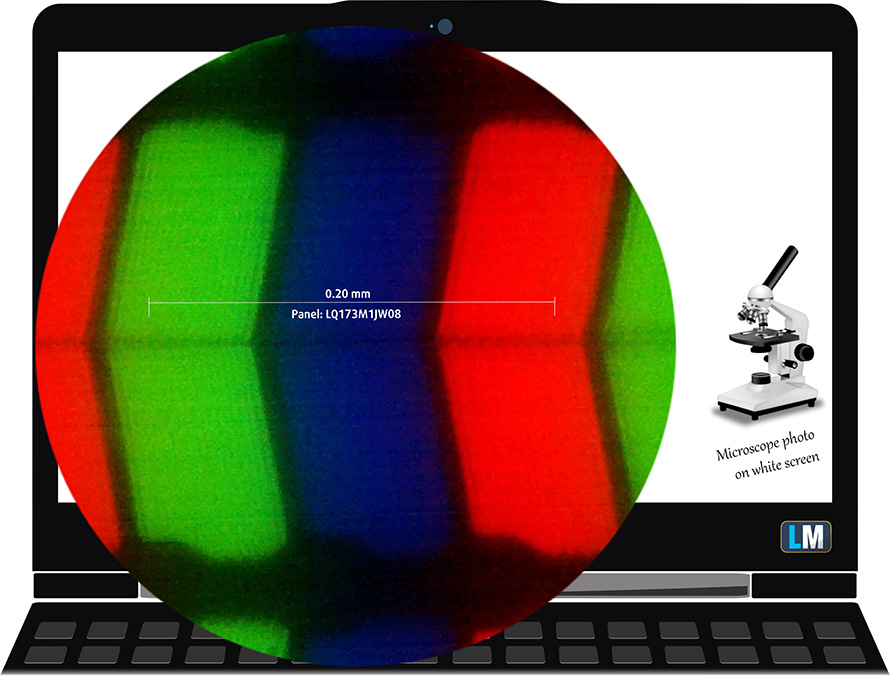
The measured maximum brightness of 339 nits in the middle of the screen and 331 nits as an average for the whole area, with a maximum deviation of 12%. The Correlated Color Temperature on a white screen is 6920K – slightly colder than the optimal for the sRGB standard of 6500K.
In the illustration below you can see how the display performs from a uniformity perspective. In other words, the leakage of light from the light source.
Values of dE2000 over 4.0 should not occur, and this parameter is one of the first you should check if you intend to use the laptop for color-sensitive work. The contrast ratio is good – 1220:1.
To make sure we are on the same page, we would like to give you a little introduction to the sRGB color gamut and the Adobe RGB. To start, there’s the CIE 1976 Uniform Chromaticity Diagram that represents the visible specter of colors by the human eye, giving you a better perception of the color gamut coverage and the color accuracy.
Inside the black triangle, you will see the standard color gamut (sRGB) that is being used by millions of people on HDTV and on the web. As for the Adobe RGB, this is used in professional cameras, monitors, etc for printing. Colors inside the black triangle are used by everyone and this is the essential part of the color quality and color accuracy of a mainstream notebook.
Still, we’ve included other color spaces like the famous DCI-P3 standard used by movie studios, as well as the digital UHD Rec.2020 standard. Rec.2020, however, is still a thing of the future and it’s difficult for today’s displays to cover that well. We’ve also included the so-called Michael Pointer gamut, or Pointer’s gamut, which represents the colors that naturally occur around us every day.
The yellow dotted line shows MSI Pulse GL76 (12Ux)’s color gamut coverage.
Its display covers 98% of the sRGB/ITU-R BT.709 (web/HDTV standard) in CIE1976.
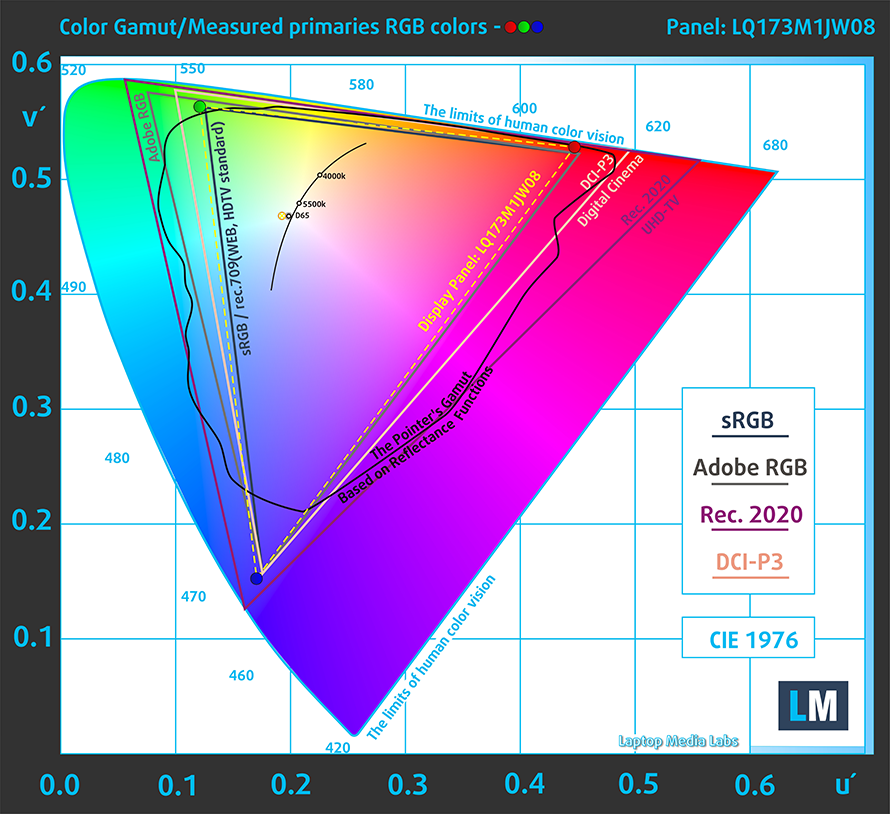
Our “Design and Gaming” profile delivers optimal color temperature (6500K) at 140 cd/m2 luminance and sRGB gamma mode.
We tested the accuracy of the display with 24 commonly used colors like light and dark human skin, blue sky, green grass, orange, etc. You can check out the results in factory condition and also, with the “Design and Gaming” profile.
Below you see the scores of MSI Pulse GL76 (12Ux) with the “Gaming and Web design” profile.
The next figure shows how well the display is able to reproduce really dark parts of an image, which is essential when watching movies or playing games in low ambient light.
The left side of the image represents the display with stock settings, while the right one is with the “Gaming and Web Design” profile activated. On the horizontal axis, you will find the grayscale, and on the vertical axis – the luminance of the display. On the two graphs below you can easily check for yourself how your display handles the darkest nuances but keep in mind that this also depends on the settings of your current display, the calibration, the viewing angle, and the surrounding light conditions.
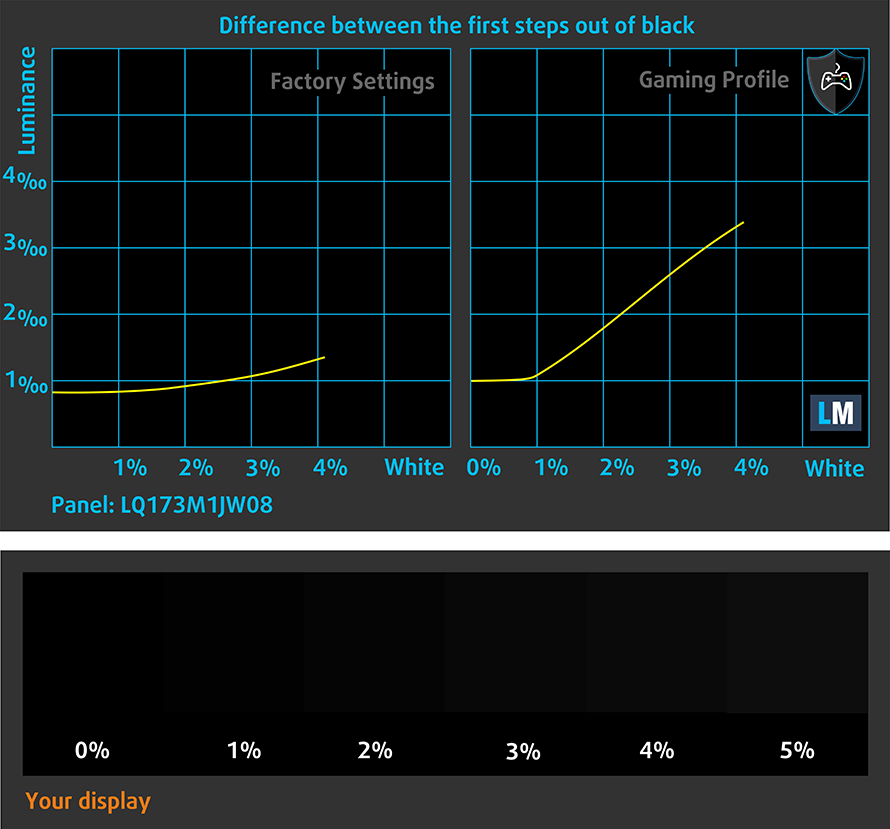
Response time (Gaming capabilities)
We test the reaction time of the pixels with the usual “black-to-white” and “white-to-black” method from 10% to 90% and vice versa.
We recorded Fall Time + Rise Time = 6 ms.
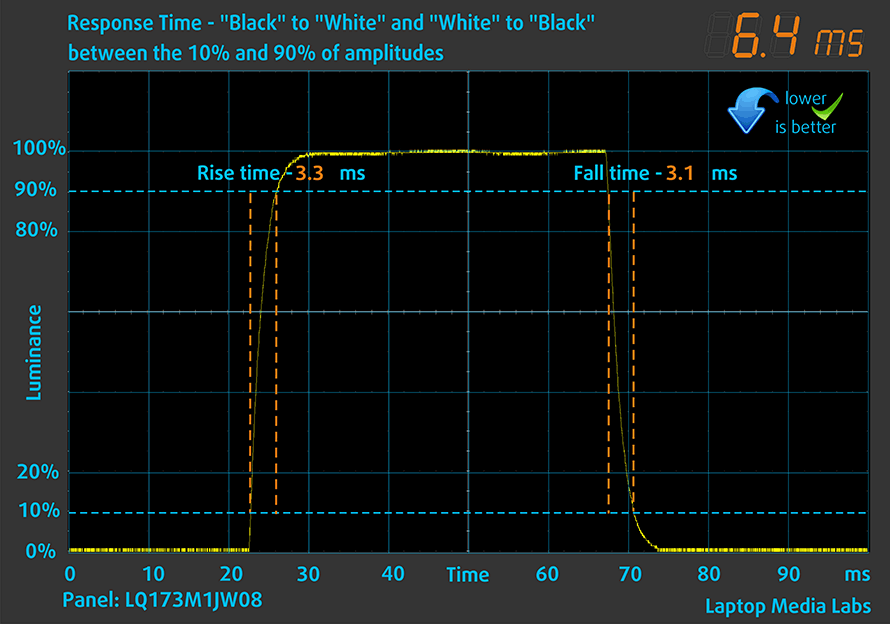
After that, we test the reaction time of the pixels with the usual “Gray-to-Gray” method from 50% White to 80% White and vice versa between 10% and 90% of the amplitude.
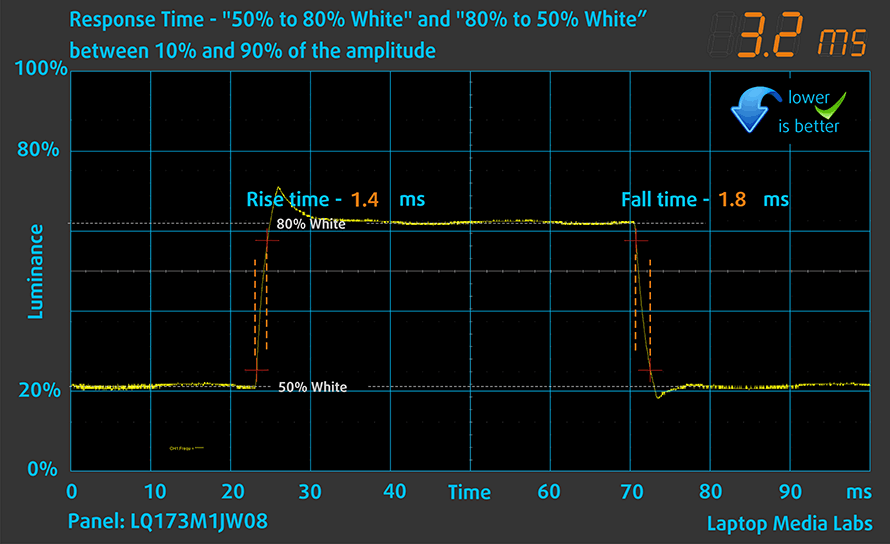
PWM (Screen flickering)
Pulse-width modulation (PWM) is an easy way to control monitor brightness. When you lower the brightness, the light intensity of the backlight is not lowered, but instead turned off and on by the electronics with a frequency indistinguishable to the human eye. In these light impulses, the light/no-light time ratio varies, while brightness remains unchanged, which is harmful to your eyes. You can read more about that in our dedicated article on PWM.
The backlight of the ASUS ROG Strix G17 G713R (2022) doesn’t use PWM to adjust its levels of brightness. This means the display is comfortable for use, without presenting any excessive eye strain in this aspect.
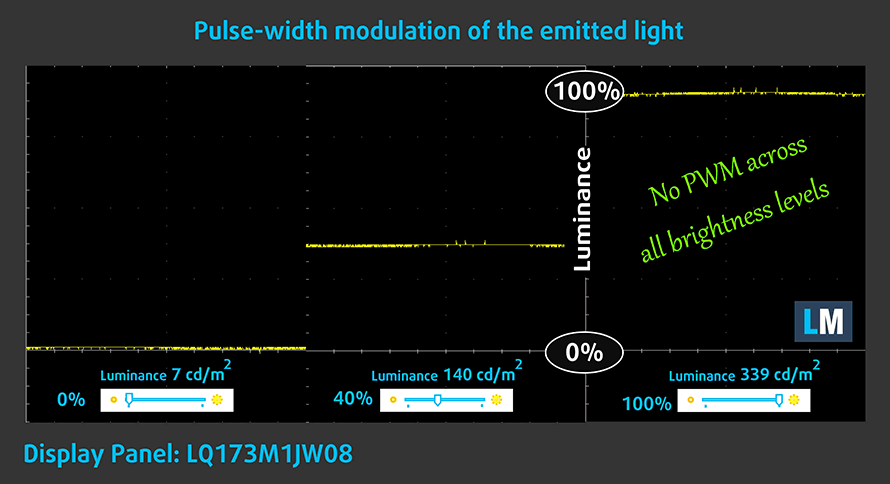
Blue light emissions
Installing our Health-Guard profile not only eliminates PWM but also reduces the harmful Blue Light emissions while keeping the colors of the screen perceptually accurate. If you’re not familiar with the Blue light, the TL;DR version is – emissions that negatively affect your eyes, skin, and your whole body. You can find more information about that in our dedicated article on Blue Light.
Buy our profiles
Since our profiles are tailored for each individual display model, this article and its respective profile package are meant for MSI Pulse GL76 (12Ux) configurations with 17.3″ FHD IPS Sharp LQ173M1JW08 (SHP1544).
*Should you have problems with downloading the purchased file, try using a different browser to open the link you’ll receive via e-mail. If the download target is a .php file instead of an archive, change the file extension to .zip or contact us at [email protected].
Read more about the profiles HERE.
In addition to receiving efficient and health-friendly profiles, by buying LaptopMedia's products you also support the development of our labs, where we test devices in order to produce the most objective reviews possible.

Office Work
Office Work should be used mostly by users who spend most of the time looking at pieces of text, tables or just surfing. This profile aims to deliver better distinctness and clarity by keeping a flat gamma curve (2.20), native color temperature and perceptually accurate colors.

Design and Gaming
This profile is aimed at designers who work with colors professionally, and for games and movies as well. Design and Gaming takes display panels to their limits, making them as accurate as possible in the sRGB IEC61966-2-1 standard for Web and HDTV, at white point D65.

Health-Guard
Health-Guard eliminates the harmful Pulse-Width Modulation (PWM) and reduces the negative Blue Light which affects our eyes and body. Since it’s custom tailored for every panel, it manages to keep the colors perceptually accurate. Health-Guard simulates paper so the pressure on the eyes is greatly reduced.
Get all 3 profiles with 33% discount
Drivers
Here, instead of a driver CD, you get a partition on the SSD, which lets you install everything you need when you first run the computer. However, if you want access to the latest drivers and utilities for this notebook you can get them here: https://www.msi.com/Laptop/Pulse-GL76-12UX/support
Battery
Now, we conduct the battery tests with the Windows Better performance setting turned on, screen brightness adjusted to 120 nits, and all other programs turned off except for the one we are testing the notebook with. This machine has a 53.5Wh battery, which lasts for 5 hours and 30 minutes of Web browsing, or 5 hours and 28 minutes of video playback.
In order to simulate real-life conditions, we used our own script for automatic web browsing through over 70 websites.
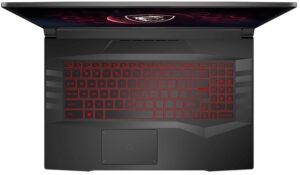
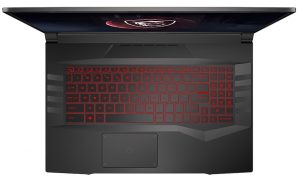
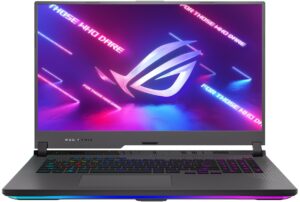
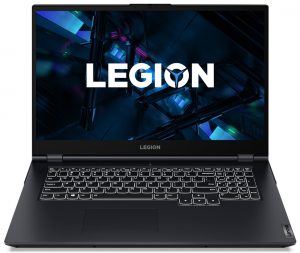
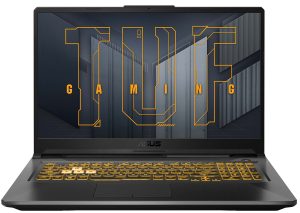
For every test like this, we use the same video in HD.





CPU options
As of the time of writing this review, the laptop ships with the Core i5-12500H, Core i7-12700H, or Core i9-12900H.
Results are from the Cinebench 20 CPU test (the higher the score, the better)
Results are from our Photoshop benchmark test (the lower the score, the better)
GPU options
Graphics-wise, we found the device equipped with the RTX 3060, RTX 3070, and RTX 3070 Ti, all coming with 105W TGP.
Results are from the 3DMark: Time Spy (Graphics) benchmark (higher the score, the better)
Results are from the 3DMark: Fire Strike (Graphics) benchmark (higher the score, the better)
Results are from the 3DMark: Wild Life benchmark (higher the score, the better)
Results are from the Unigine Superposition benchmark (higher the score, the better)
MSI Pulse GL76 (12Ux) GPU variants
Here you can see an approximate comparison between the GPUs that can be found in the MSI Pulse GL76 (12Ux) models on the market. This way you can decide for yourself which MSI Pulse GL76 (12Ux) model is the best bang for your buck.
Note: The chart shows the cheapest different GPU configurations so you should check what the other specifications of these laptops are by clicking on the laptop’s name / GPU.
Results are from the 3DMark: Time Spy (Graphics) benchmark (higher the score, the better)
Results are from the 3DMark: Fire Strike (Graphics) benchmark (higher the score, the better)
Results are from the 3DMark: Wild Life (Graphics) benchmark (higher the score, the better)
Results are from the Unigine Superposition benchmark (higher the score, the better)
Gaming tests
| Metro Exodus | Full HD, Low (Check settings) | Full HD, High (Check settings) | Full HD, Extreme (Check settings) |
|---|---|---|---|
| Average FPS | 131 fps | 68 fps | 33 fps |
| Borderlands 3 | Full HD, Medium (Check settings) | Full HD, High (Check settings) | Full HD, Badass (Check settings) |
|---|---|---|---|
| Average fps | 103 fps | 84 fps | 67 fps |
| Tom Clancy’s Ghost Recon Wildlands | Full HD, High (Check settings) | Full HD, Very High (Check settings) | Full HD, Ultra (Check settings) |
|---|---|---|---|
| Average | 98 fps | 86 fps | 57 fps |

| Shadow of the Tomb Raider (2018) | Full HD, Medium (Check settings) | Full HD, High (Check settings) | Full HD, Highest (Check settings) |
|---|---|---|---|
| Average | 113 fps | 107 fps | 57 fps |
Temperatures and comfort
Max CPU load
In this test we use 100% on the CPU cores, monitoring their frequencies and chip temperature. The first column shows a computer’s reaction to a short load (2-10 seconds), the second column simulates a serious task (between 15 and 30 seconds), and the third column is a good indicator of how good the laptop is for long loads such as video rendering.
Average P-core frequency; Average E-core frequency; CPU temp.; Package Power
| Intel Core i7-12700H (45W TDP) | 0:02 – 0:10 sec | 0:15 – 0:30 sec | 10:00 – 15:00 min |
|---|---|---|---|
| MSI Pulse GL76 (12Ux) | 3.29 GHz @ 2.76 GHz @ 77°C @ 97W | 3.27 GHz @ 2.75 GHz @ 83°C @ 95W | 3.14 GHz @ 2.68 GHz @ 86°C @ 85W |
| MSI Crosshair 15 (B12Ux) | 3.27 GHz @ 2.67 GHz @ 84°C @ 97W | 3.19 GHz @ 2.65 GHz @ 91°C @ 94W | 3.05 GHz @ 2.47 GHz @ 88°C @ 80W |
| Acer Predator Helios 300 (PH317-56) | 3.39 GHz @ 2.84 GHz @ 64°C @ 103W | 3.53 GHz @ 2.76 GHz @ 71°C @ 100W | 2.66 GHz @ 2.86 GHz @ 87°C @ 102W |
| MSI Stealth GS66 (12Ux) | 3.84 GHz @ 2.82 GHz @ 83°C @ 124W | 3.55 GHz @ 2.67 GHz @ 85°C @ 107W | 3.19 GHz @ 2.42 GHz @ 83°C @ 85W |
| MSI Vector GP66 (12Ux) | 3.81 GHz @ 2.91 GHz @ 81°C @ 116W | 3.54 GHz @ 2.72 GHz @ 83°C @ 98W | 3.30 GHz @ 2.57 GHz @ 79°C @ 86W |
| Acer Predator Triton 500 SE (PT516-52s) | 3.25 GHz @ 2.52 GHz @ 89°C @ 80W | 3.10 GHz @ 2.46 GHz @ 90°C @ 73W | 2.93 GHz @ 2.38 GHz @ 91°C @ 66W |
The result in this test was definitely not bad. Both the P-cores and the E-cores were clocked pretty high, while the temperature was not too shabby either.
Real-life gaming
| NVIDIA GeForce RTX 3060 | GPU frequency/ Core temp (after 2 min) | GPU frequency/ Core temp (after 30 min) | Max Fans |
|---|---|---|---|
| MSI Pulse GL76 (12Ux) | 1620 MHz @ 77°C @ 105W | 1608 MHz @ 81°C @ 105W | 1650 MHz @ 70°C @ 105W |
| ASUS ROG Strix G17 G713R (2022) | 1827 MHz @ 83°C @ 139W | 1825 MHz @ 85°C @ 139W | – |
| ASUS ROG Strix G15 G513R (2022) | 1844 MHz @ 81°C @ 139W | 1723 MHz @ 74°C @ 118W | – |
| ASUS TUF Gaming F17 (FX706, 2021) | 1548 MHz @ 80°C @ 95W | 1540 MHz @ 81°C @ 95W | – |
| HP Omen 17 (2021, 17-ck0000) | 1861 MHz @ 72°C @ 129W | 1857 MHz @ 73°C @ 130W | – |
| Lenovo ThinkBook 16p Gen 2 | 1535 MHz @ 69°C @ 75W | 1517 MHz @ 76°C @ 75W | – |
| Lenovo Legion 5i (17″ Intel, 2021) | 1886 MHz @ 75°C @ 127W | 1879 MHz @ 76°C @ 127W | – |
| Lenovo Legion 7 (16″, 2021) | 1867 MHz @ 70°C @ 126W | 1858 MHz @ 74°C @ 127W | – |
| Lenovo Legion 5 (15″ AMD, 2021) | 1831 MHz @ 75°C @ 129W | 1815 MHz @ 80°C @ 129W | – |
| Lenovo Legion 5 Pro (16″) | 1803 MHz @ 76°C @ 129W | 1787 MHz @ 81°C @ 129W | – |
| MSI GP66 Leopard | 1863 MHz @ 72°C @ 124W | 1852 MHz @ 75°C @ 125W | 1849 MHz @ 69°C @ 127W |
| MSI GP76 Leopard | 1860 MHz @ 71°C @ 129W | 1857 MHz @ 73°C @ 128W | 1869 MHz @ 67°C @ 128W |
Again, we see a huge improvement over last year. Now, the RTX 3060 does run with 20W more power and sits about 6°C cooler. Enabling CoolerBoost has a huge impact on the temperatures, where the GPU gets cooler by 11°C.
Gaming comfort
Although the cooling has been improved, the heat on the outside is almost unbearable. It might not be super clear on the IR image below, but the reading shows 57°C. This is plain hot to the touch.
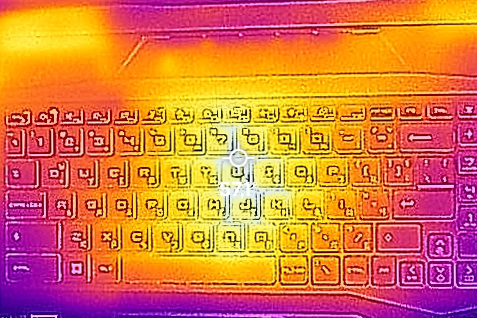
Verdict
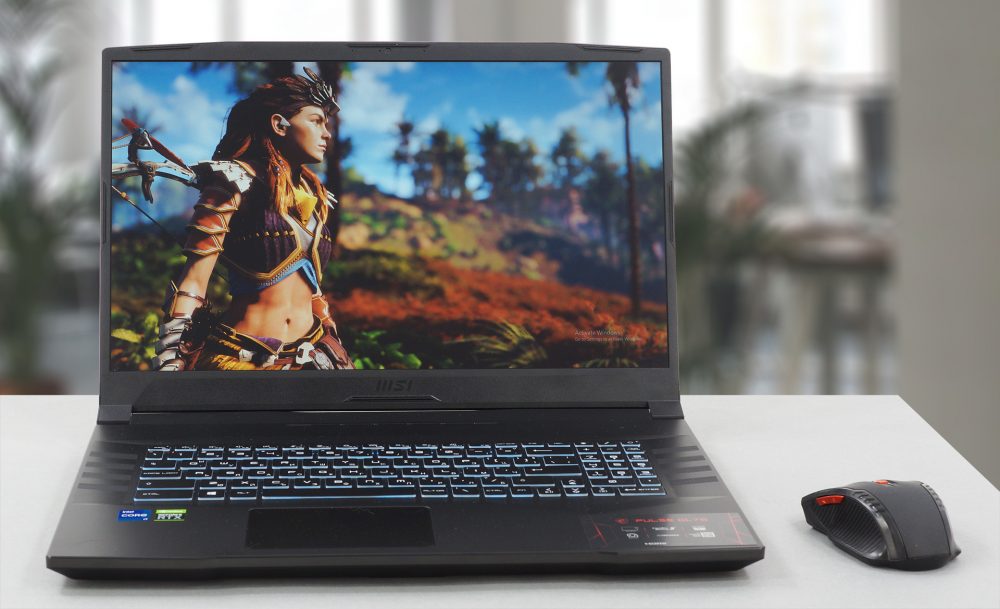 We are pleasantly surprised by the fact that manufacturers tried implementing higher TGP versions of the RTX 3000 GPU lineup in their new laptops. Some of the devices feature some sort of a visual refresh, while others, like the Pulse GL76 (12Ux) appear to be different only by the heart.
We are pleasantly surprised by the fact that manufacturers tried implementing higher TGP versions of the RTX 3000 GPU lineup in their new laptops. Some of the devices feature some sort of a visual refresh, while others, like the Pulse GL76 (12Ux) appear to be different only by the heart.
And quite the difference it is – the Alder Lake CPUs of Intel completely obliterate everything we’ve previously tested, including the latest AMD 6000H series. This is a huge ace up GL76’s sleeve. Furthermore, there are two SODIMM slots for memory upgrades, and MSI conveniently chose DDR4 modules, which are far easier to get nowadays.
In addition to that, this laptop supports Gen 4 drives with both of its M.2 PCIe x4 slots. On the other hand, you don’t get Thunderbolt 4 support, and one of the three USB Type-A ports is 2.0. Ideally, it should be used to connect a peripheral like a mouse, keyboard, or controller.
MSI Pulse GL76 (12Ux)’s IPS panel has a Full HD resolution, comfortable viewing angles, and a good contrast ratio. It covers 98% of the sRGB color gamut, and its backlight doesn’t use PWM for brightness adjustment. Furthermore, our Gaming and Web design profile drops the Average dE to a value of 1.1, which makes it useful for color-related work. Of course, gamers will be extremely happy with the super-fast pixel response time and the 360Hz refresh rate.
Now, there were some things that can put you off. For example, the keyboard is really not up there for gaming. It is a bit mushy, and the key travel is short. Also, the keyboard deck gets really toasty while you’re playing intensive games. Use CoolerBoost where possible, and get yourself a good pair of headphones.
We’re not impressed by the battery life of Pulse GL76 although it’s more than 20% longer than its predecessor. This is due to its limited capacity of just 53.5 watthours. However, you can order a configuration with a bigger 90Wh unit. Otherwise, they’ll be just some empty space next to the battery which can’t be used for mounting a 2.5-inch SATA drive. Just a wasted space.
On the other hand, the Pulse GL76 (12Ux) is built like a tank. We observed almost no flex when we tried twisting the notebook, while the palm rest area is free of deck flex. Generally, the build quality is great. Its structural rigidity is enhanced by a metal sheet, placed right beneath the battery pack.
At the end of the day, the Pulse GL76 (12Ux) leaves a lot to be desired. However, its price tag is really appetizing, and if you find it on sale – go for it.
You can check the prices and configurations in our Specs System: https://laptopmedia.com/series/msi-pulse-gl76-12ux/
Pros
- Two SODIMM slots, two M.2 PCIe x4 slots with Gen 4 support
- Rigid structure
- 144Hz and 360Hz display options
- Alder Lake and bumped TGP of all graphics options
- Improved cooling
Cons
- No SD card reader and Thunderbolt 4
- Warm externals
- Short battery life (for configurations with 53.5Wh battery)


